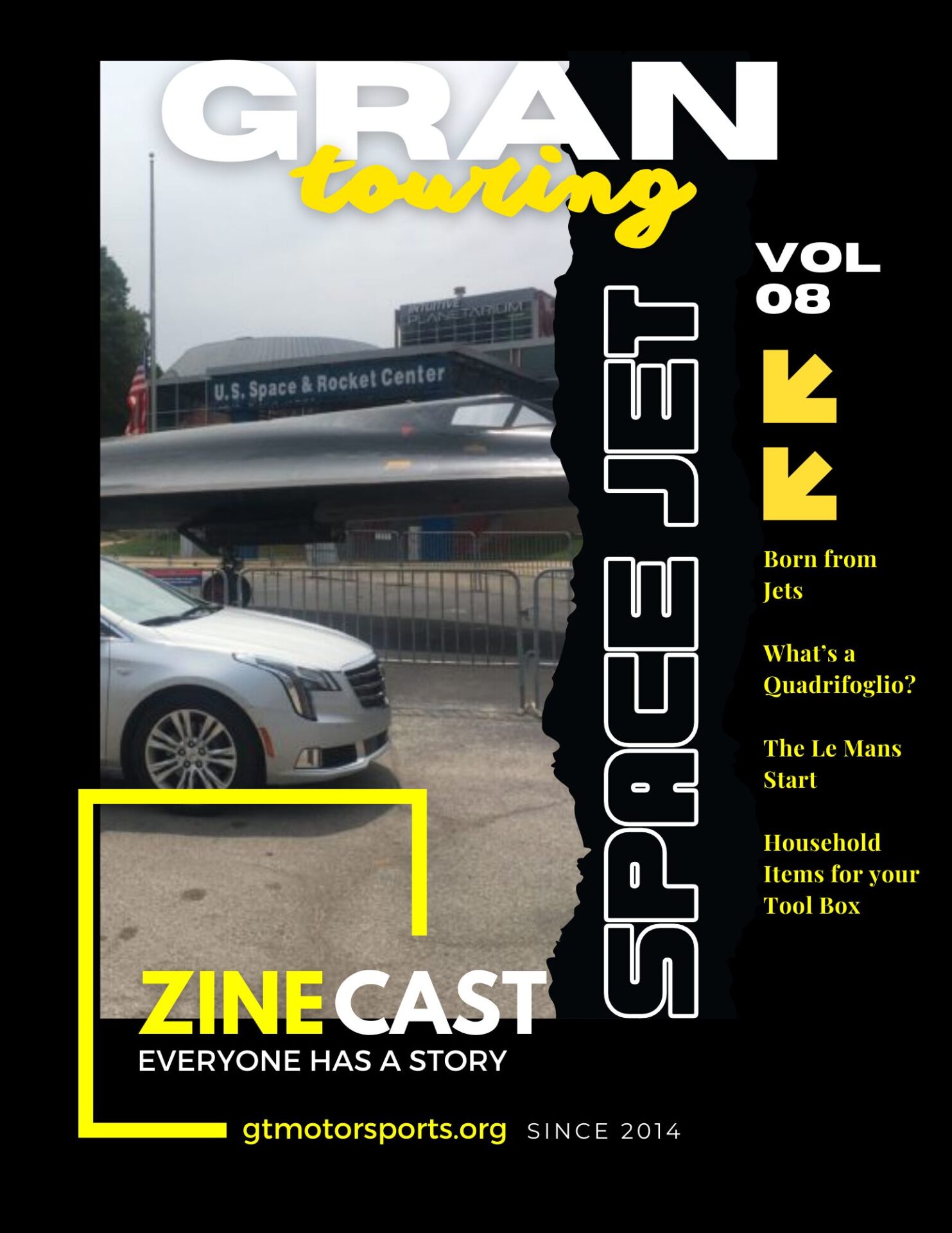If you’ve been following my more recent Test Drives, tooling around in vintage sports cars is always fun, but recently I had a unique opportunity to drive both a 2014 Cadillac ELR and a 1937 Cadillac 8 60 Touring Coupe.
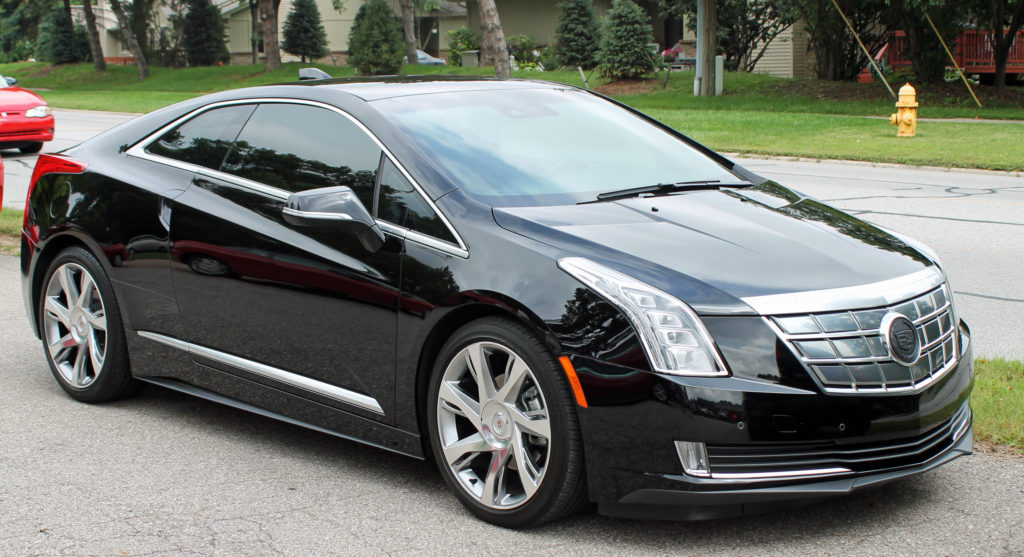
The ELR is utilizes the Chevrolet Volt hybrid-motor, battery system and drive-train with a completely different chassis – the ELR was offered as 2-door coupe with a fairly limited production run of 2500 units. The car is packed with bells and whistles, some that are a bit excessive such as powered cup holder covers and an electronic glove box release. But as far as creature comforts the 20-way adjustable seats that include move-able “wings” are fantastic. Since the ELR is riddled with gadgets and gizmos that all require electricity to operate it poses a huge draw on the battery system limiting the ELR to approximately 30 miles of electric-only driving before the gasoline motor engages to both recharge the battery and provide additional power. The engineers seem to have over complicated the regenerative braking system with a myriad of configurable settings that almost require a degree in Electrical Engineering to understand them all.
Entering the ELR, you’ll notice that the door handles, like those on the late model Corvettes is also electric. The interior is luxurious with thick, supple leather (not the cardboard junk used in most every other car sold today) and even an alcantara headliner. The center console is reminiscent of the Porsche 928 by extending to the rear seats and effectively separating them. Head and legroom for the rear seats is limited to people under 5’6″ with no legs but who buys a coupe for the back seats? As with many modern cars, the ELR is push-button start and when the vehicle “starts”, the brake pedal drops slightly to indicate that it is “on”. Having driven a Camry-Hybrid in the past, the only indication the car was “on” was a light on the dashboard, so this physical reminder was a welcome change.
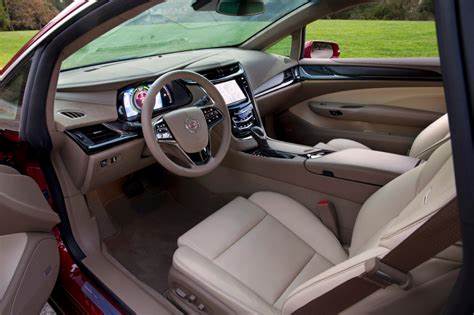
The instrument cluster is an LCD that integrates the navigation map into the speedometer which is surprisingly useful and convenient. The display includes both an electric and fuel level readout as well as a range readout for both electric and gasoline power. The display screen is good sized and straight-forward – thankfully the HVAC controls are separate, mounted on a swing away panel below the screen. Perhaps the most interesting interior feature is the Active Noise Suppression system – this isn’t the miserable fake sound speaker such as on the new BMWs but a system that apparently sends out sounds to cancel noise.
Driving the ELR is almost surreal because of the (virtually) complete lack of sound. The ride is well controlled but almost without feeling which is the current trend in a lot of automobiles today. Steering feel was surprisingly good given the electric power steering. Throttle response was good – in electric-only mode, the ELR offers 157 hp but when the gasoline engine is engaged, it adds an additional 83 hp to the fray – I didn’t engage the gasoline engine as there was no need because the electric power is more than sufficient, but if needed the 240 combined horsepower should be more than enough to merge/pass in traffic.
Overall the ELR is quite a pleasant hybrid that is a true hybrid – not a plug-in only or a gas/electric like the Prius. Instead, this is a plug-in that can be be driven on electric only and will activate it’s gasoline engine to recharge and supplement the batteries. The best or worst feature of the ELR is it’s resale value – the owner revealed that this particular car was a fully loaded $83K model that was purchased used, 3 years old for $25K. Holy depreciation, Batman!!
>> Later that Same Day
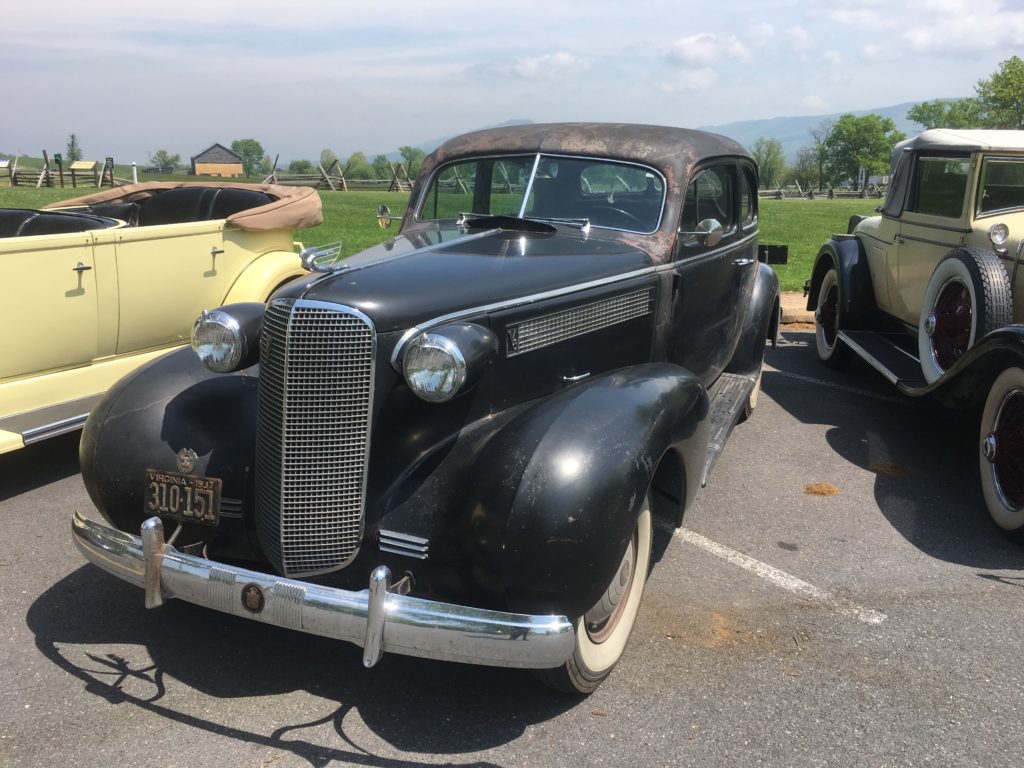
The same afternoon, I had the opportunity to drive an unrestored 1937 Cadillac Coupe, a car that technically doesn’t exist because it is a coach-built coupe that is one of two produced by Fleetwood. On the outside, it’s rough – peeling, flaking paint, surface rust and tonnes of “patina”. Underneath, it’s solid and an phenomenal driver especially given it’s 82 years old! – My test drive was from Warrenton, VA to Delaplane, VA – about 25** miles unless one misses an exit and adds about 10 miles, oops! (** by the time you read this, I will have logged a couple hundred miles in this caddy as part of the Classic Car Club of America, Spring Tour. #ccca2019springtour on IG.)
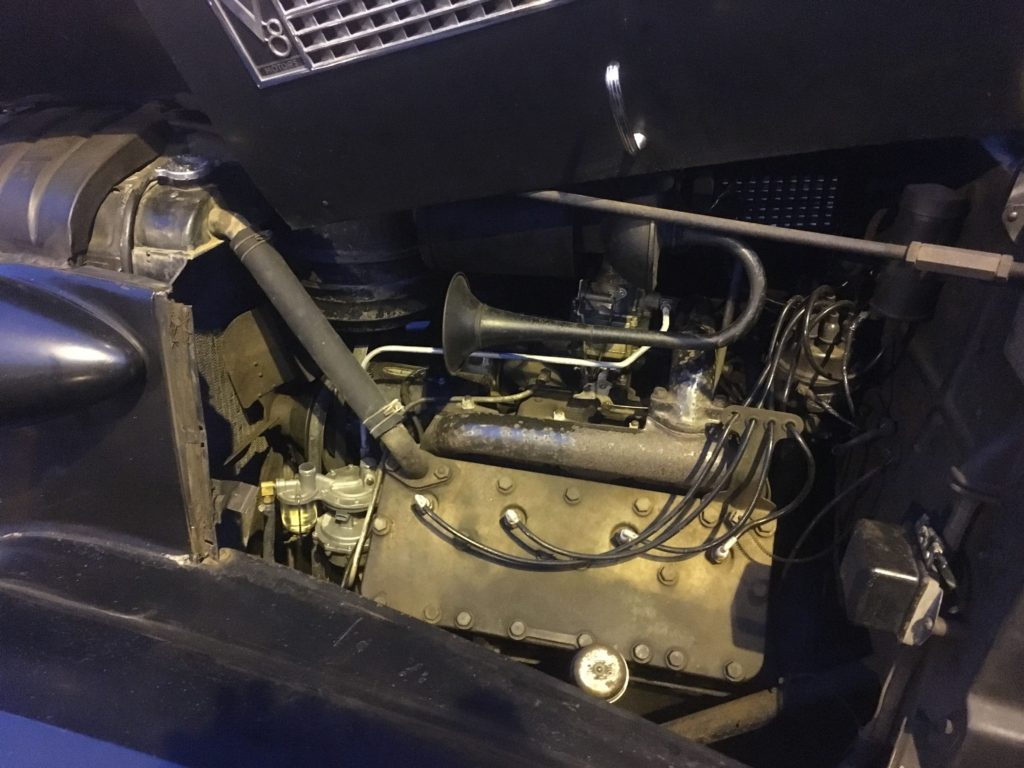
This particular Caddy has a fair number of options including a heater (with a fan) but no radio. The power plant is a 346 CID (that’s 5.67-litres for those using the metric system) flathead V8 coupled to a 3-speed manual transmission with manual steering and manual brakes – no sissy power assists or nannies!! Since this was the normal state for vehicles of this era, the steering doesn’t require He-Man strength to turn nor does it require legs of iron to slow and/or stop the car even without power assists. The only real catch is that while the gearbox uses synchromesh gears, first gear will grind slightly unless the gearbox is dropped into 2nd gear first – something that happens with modern cars as well.
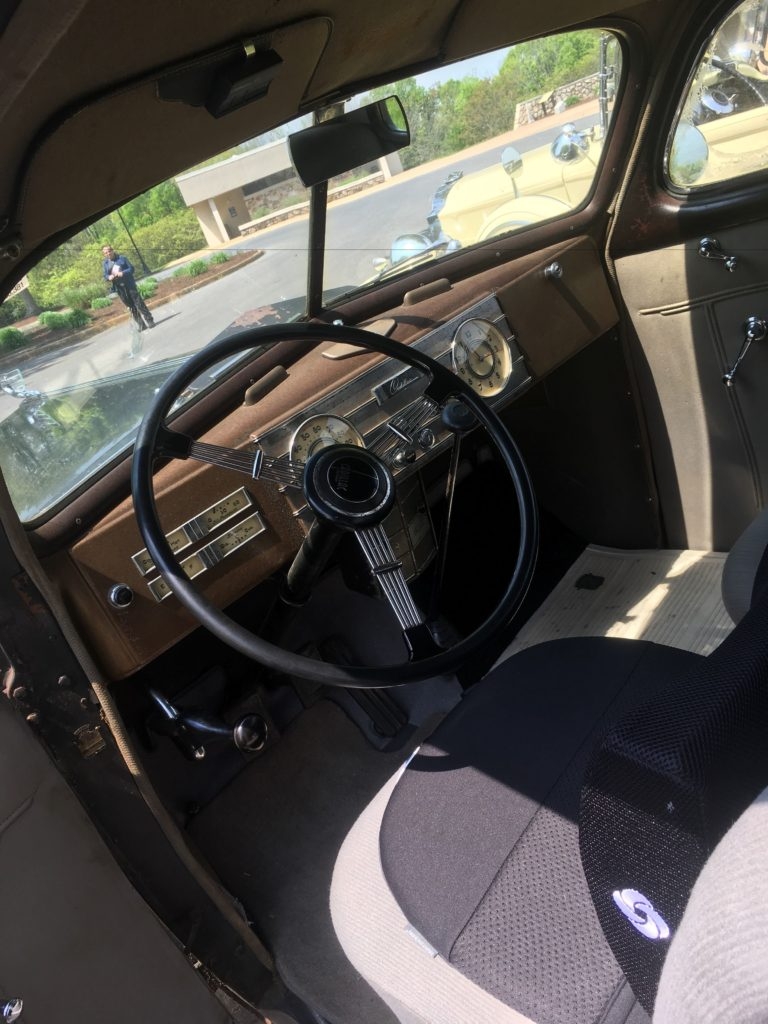
The seats offer a surprisingly low seating position and have the same shape and feel as the side chairs in your Grandmother’s parlor. The rear seats, while not incredibly wide, are also directly from your Grandmother’s house – the original Love Seat. Once seated, the dials and gauges are very period – unlike new cars, the Cadillac (aka “the World Standard“) at the time had a FULL GAUGE SET – water, oil pressure, fuel level and voltmeter!! No tachometer but that was for those race car folks.
True to form – I sat down, inserted the ignition key, turned it own and immediately panicked because the starter wouldn’t function. It helps to press the “Start” button on the dashboard. Ha! Push button Start in 1937. Admittedly, I had the same problem with a ’59 MGA that I brokered many years ago – It won’t start…Oh, wait, I’m an idiot.
Even with the original 6-volt system, the flathead fires up without a hitch. The V8 produces 135 hp but is a long-stroke motor so it makes oodles of torque and is virtually silent. With 155 ft/lbs of torque at 1000 rpms – yes, 1000 rpms – it pulls away from a stop with absolutely no effort. Max HP is at 3400 rpms and out of respect for the Caddy the goal was to shift early and rely on the torque. With torque coming on so low, it’s possible to drive the Caddy almost like an automatic – leaving it in top gear (3rd) at any speed over about 25 mph. Ironically, the shifter is very solid and feels very much like the shifter in my Ford F-350!!
Even though the car is older than many of our parents, it moves effortlessly through traffic. It cruises comfortably at 60 mph – that alone isn’t impressive BUT think about the roads that existed in 1937. The Lincoln Highway, finished around 1938 was NOT a paved highway but rather an amalgamation of roads that provided travelers a roadway to follow rather than a hunt-and-peck method of traveling. That being said, the ride is supple – not pillowy-soft like your Grandfather’s Cadillac from the ’60s and not bone-jarring like an old pickup truck. The brakes are 4-wheel drum, hydraulic, and does require a bit more pressure to stop than the newer cars with ultra-assisted brakes. Keeping these things in mind and doing something that modern drivers don’t do (looking ahead), braking is a non-issue.
A few weeks back, I followed this same Caddy while test driving a ’72 Pontiac Grandville convertible. Admittedly I wasn’t hustling because the car isn’t mine and the Grandville is HUGE. But more than once the Caddy left me behind – I was amazed that an 82 year old car was cruising away from me on some relatively twisty primary roads in rural Virginia with such ease. Having driven the car myself, now I see why the driver was able to get away – even in the twisties, the Caddy turns in without any wallowing or bump steer. Yes, suspension design has evolved since ’37 and compared to new cars, it’s ancient BUT it works.
The more I’m around the Cadillac, the more I’m impressed – it truly drives and rides like a modern car. And it was quite interesting to see how far Cadillac has advanced and also how little has changed in 80+ years. From the outside it certainly looks like a barn find but the proof is under the fluff. Cadillac was a leader in the automotive industry for many decades – “the World Standard“ – in fact, Cadillac made the Fastest Car in America for 1956. That was when Cadillacs were driven by industry leaders, company presidents and movie stars – NOT your aging grandparents. To their credit, Cadillac has re-invented itself as a top-shelf luxury brand although they’re struggling to retain the new market as competition in that market segment increases.
Sadly Cadillac, like every luxury brand, is forced to add more and more fluff to attract buyers. The buyers are no longer “car people” but rather they are gadget fanatics. They’re more interested in which navigation system is more slick or which one has a better seat heater/cooler rather than quality. The ’37 speaks volumes about what really matters about automobiles – simplicity and durability. The quiet ride is so modern that it shows how little cars have changed. The ELR is quite impressive as well but the electronic gizmos concern me from a longevity standpoint. Yes, everything works TODAY but what will happen when something fails when the car is out of warranty? I won’t be around to see it, but if taken care of I would venture a guess that with proper maintenance and care, the ’37 will still be driveable in another 80 years (that’s 2097 for those pretending to do the math) unlike the ELR.
Taking the good with the bad, both Cadillacs are amazing in their own right and should be considered prime examples of American automotive manufacturing as the Standard for the World! Until next time … #merrymotoring



